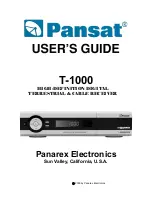
2/14/2007
Page - 2
The DCxxA
A Direct Conversion, Fixed-Frequency Transceiver for 40, 30 and 20 Meters
The DCxx is a moderately complex rig, which yields excellent performance, yet is small enough to fit into
an Altoids tin. The receiver features nearly complete immunity to AM SWBC interference and can be run on an AC
supply with little hum pickup or AM BC interference common to most DC receiver designs. One stage of audio
band pass filtering gives the receiver some selectivity. The transmitter puts out a respectable 750 mW of power,
with a 12V supply and over 1 Watt with 13.8 volts. The transmitter frequency is automatically shifted up about 600
Hz to provide the proper T/R offset. The rig also includes a simple keyer chip.
Assembly:
Review the entire manual and inventory the parts for each group before proceeding.
Assembly of the board will be done in several groups. You may find it convenient to separate the parts for
each of the groups as shown in the parts lists for each group.
You can “smoke test” most of these groups when finished, or move on to the next group and test
everything at once. If a group fails to pass the smoke test, see the trouble shooting section located after the
assembly instructions.
If you plan on installing the board into an Altoids tin, trim off the corner of the board next to the paddle jack
before you install the jack. You may also want to mark where the mounting holes and where the phone jacks will
be in the tin before installing any parts.
The parts location diagram for the whole board is shown below. Component values are marked in red.
Experienced builders should be able to build up most of the board using just this diagram.
Steve and Doug wish to thank Chuck Carpenter, W5USJ, for manual editing and revisions. Also our thanks to Jay Bromley,
W5JAY, Tony Fishpool, G4WIF and David Yarnes, W7AQK, for kit testing and manual proof reading.
Summary of Contents for DC40A
Page 18: ...2 14 2007 Page 18...



































